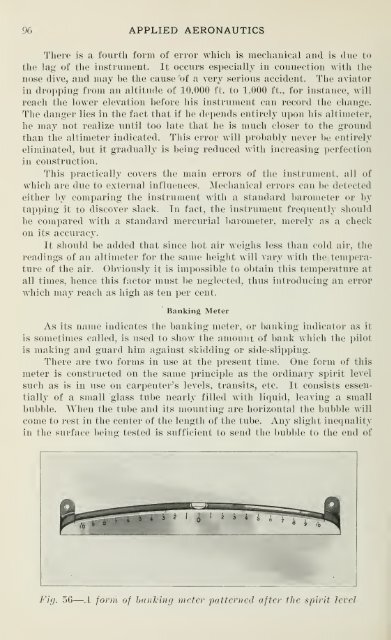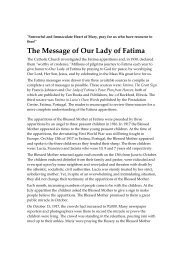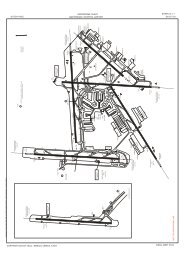Applied aeronautics; the airplane - Beeldbibliotheek
Applied aeronautics; the airplane - Beeldbibliotheek
Applied aeronautics; the airplane - Beeldbibliotheek
- No tags were found...
Create successful ePaper yourself
Turn your PDF publications into a flip-book with our unique Google optimized e-Paper software.
—96 APPLIED AERONAUTICSThere is a fourth form of error which is mechanical and is due to<strong>the</strong> lag of <strong>the</strong> instrument. It occurs especiall}' in connection with <strong>the</strong>nose dive, and may be <strong>the</strong> cause \)f a very serious accident. The aviatorin dropping from an altitude of 10,000 ft. to 1,000 ft., for instance, willreach <strong>the</strong> lower elevation before his instrument can record <strong>the</strong> change.The danger lies in <strong>the</strong> fact that if he depends entirely upon his altimeter,he may not realize until too late that he is much closer to <strong>the</strong> groundthan <strong>the</strong> altimeter indicated. This error will probably' never be entirelyeliminated, but it gradually is being reduced with increasing perfectionin construction.This practically covers <strong>the</strong> main errors of <strong>the</strong> instrument, all ofwhich are due to external influences. Mechanical errors can be detectedei<strong>the</strong>r by comparing <strong>the</strong> instrument with a standard barometer or bytapping it to discover slack. In fact, <strong>the</strong> instrument frequently shouldbe compared with a standard mercurial barometer, merely as a checkon its accuracy.It should be added that since hot air weighs less than cold air, <strong>the</strong>readings of an altimeter for <strong>the</strong> same height will vary with <strong>the</strong> temperatureof <strong>the</strong> air. Obviously it is impossible to obtain this temperature atall times, hence this factor must be neglected, thus introducing an errorwhich may reach as high as ten per cent.Banking MeterAs its name indicates <strong>the</strong> banking meter, or banking indicator as itis sometimes called, is used to show <strong>the</strong> amount of bank which <strong>the</strong> pilotis making and guard him against skidding or side-slipping.There are two forms in use at <strong>the</strong> present time. One form of thismeter is constructed on <strong>the</strong> same principle as <strong>the</strong> ordinary spirit levelsuch as is in use on carpenter's levels, transits, etc. It consists essentiallyof a small glass tube nearly filled with liquid, leaving a smallbubble. When <strong>the</strong> tube and its mounting are horizontal <strong>the</strong> bubble willcome to rest in <strong>the</strong> center of <strong>the</strong> length of <strong>the</strong> tube. Any slight inequalityin <strong>the</strong> surface beino; tested issufficient to send <strong>the</strong> bubble to <strong>the</strong> end ofFig. 56A form of hanking meter patterned after <strong>the</strong> spirit level












